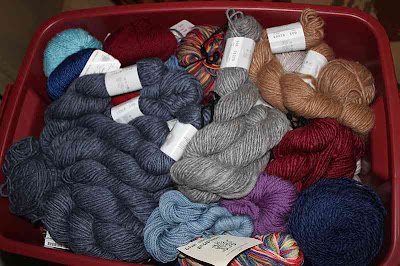How did I know? Well, I'm no stranger to making bread, even whole grain bread but I wanted to start incorporating much more than whole wheat. I wanted to use a variety of grains, seeds, nuts, a few vegetables, and even beans.
Yes, you read it right, beans. Some of the recipes I'm about to try call for them soaked, cooked and then used in bread. Some for beans just ground through your wheat grinder into flour and used with other flours. And even some told how to sprout beans and grains , then dry them before grinding into flour. This sprouting method being the ultimate nutrient booster.
And I don't want to stop my experimenting there I want to use some of those vegetables I dried and turned into powder. Wouldn't they be wonderful in boosting the nutrient levels in my breads, along with adding flavor?
While my brain was galloping off into these varied paths, it couldn't help but side track to crackers also.
But first before I got serious about bread making, I knew I needed new bread pans. New bread pans because the tiny pans on the left in the picture were too small to form a serious loaf of sandwich bread.
The 8 1/2 x 4 1/2 inch pan in the middle was too wide and though I get a decent loaf of white bread out of them, wheat bread has to be cooked until the outside is quite dark to get the inside done. It's a long ways for the heat to reach the center because the pan is so... wide.
This meant I just couldn't stand it and with fear of my bread becoming dry and over cooked, I'd frequently snatched them out to discover the centers doughy. Waste not, want not, entered and the ends became slices of bread while I disasembled the rest skirting around the doughy center to cut pieces for dressing, bread crumbs, and crouton making.
These wider pans also mean that the heavier, heartier breads with whole grains with the added weight, flop out on top, leaving wings.
Of course there are those whole grain breads that can hold their own form creating lovely round and oblong shapes (Sorry, all I had was a picture of artisan white bread) But, some grains like Khorasan wheat which is buttery and rich - can not hold a round or oblong shape and needs some confining. And though the round or oblong breads are great, sometimes a loaf shape is what's needed. So off to my chef supply catalogues I went along with a search of the Internet for information on bread pans.
I saw chit chat on how wonderful different finishes are and dark surfaces versus shiny. Even glass versus metal. But since I have one glass bread pan similiar in size to the metal ones and it still didn't bake the whole grains the way I wanted, I knew there had to be more to it.
Finally, I found a great video on bread making with whole grains. It didn't give any recipes but it did give techniques for using rye or whole wheat. It mentioned that you needed a narrow bread pan for whole grain breads to allow them to bake through more easily. It also spoke of the importance of measuring your dough, two pounds per loaf. I would guess this is so the bread gets done inside and all the loaves at the same time. That is if your oven is working right.
I was so... excited to see this because finally, someone was speaking my language. So with this bit of information off I went to look at the three chef supply catalogues I have. Only one fit the need, King Aurther's.
They had bread pans in 8 1/2 x 4 1/2 inches, 9x5, and 9x4x4. Only the 9x4x4 fit the bill for what I needed since Khorasan wheat was highly nutritious but can NOT stand up on its own. Hence, the high sides which support the dough keeping it from forming wings and the narrow bottom which allows the insides to get done before the outside is dark, dark brown.
The pans also have ridges along the sides and in, touted to help air circulation. The pans weigh a ton. Okay, maybe not that much. But, they are hefty. Yet, with this thick construction, I know they will conduct heat well, similiar to a cast iron pan. I have a couple of those bread pans but they are also wide. I am going to bring them in and give them a work out too, to see where they fit in, in my bread making. No, the heaviness the of King Aurther's bread pans isn't bothering me since I'd guess they will last through my lifetime and my children's too.
The price is pretty hefty for these. No, Walmart special. So if you are looking for just such a pan be prepared to pay $17.99 but keep in mind this is an long term investment. I've learned that if you buy good cookware, you only have to buy it once.
I'll tell you soon how well I like them.






















































